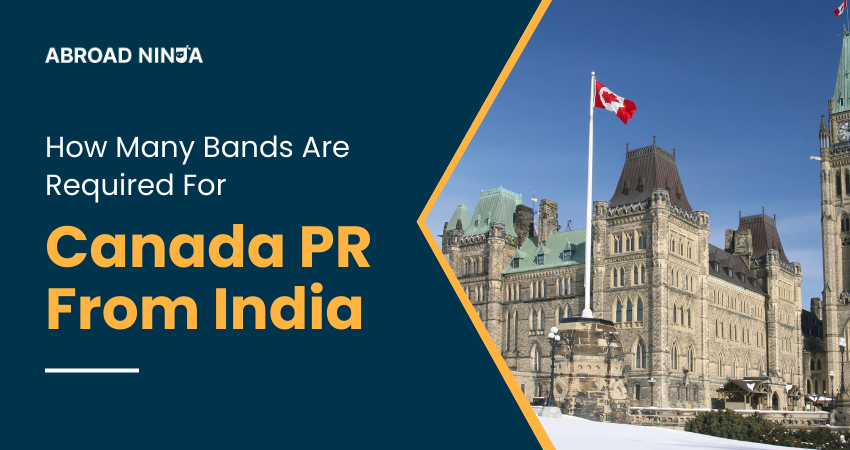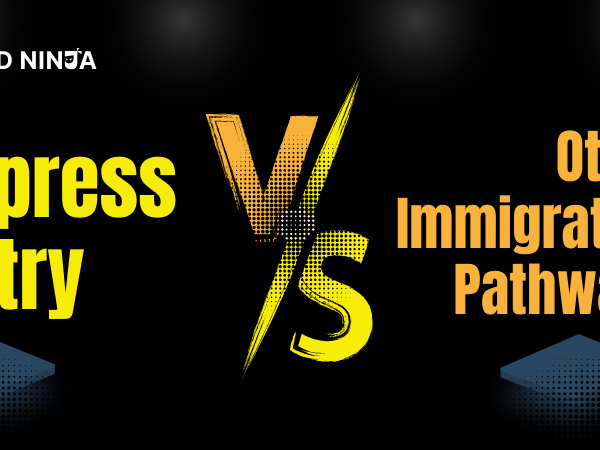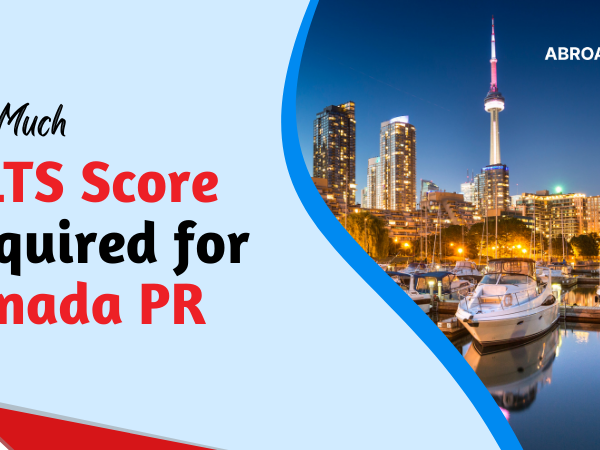Comprehending the bands needed to obtain Canadian Permanent Residency (PR) from India is vital for those who wish to migrate. The Comprehensive Ranking System (CRS) evaluates an individual’s eligibility based on criteria like age, education, professional experience, language proficiency, and adaptability. These are assessed via a point-based system called bands, with a highest attainable score of 1,200. The better the score, the higher the chances of the candidate receiving an Invitation to Apply (ITA). To maximize the odds of obtaining Canadian PR from India, it is significant to have a detailed understanding of these bands.
To be eligible for Canadian PR from India, applicants must score well in all four bands set by IRCC. These are:
- The core/human capital factors band, which assesses age, educational level, official language proficiency in English/French and Canadian work experience. If the applicant is between 20-29 years old with a master’s degree and high proficiency in both official languages, they can gain the maximum points.
- The spouse or common-law partner factors band, which takes into account the spouse or partner’s language skills, educational level, and Canadian work experience.
- The skill transferability factors band, which evaluates factors such as foreign work experience and educational credentials that can be applied to the Canadian job market.
- The additional points band, which awards extra points for having a sibling who is already a permanent resident or citizen of Canada.
What are the language requirements for Canada PR?
To get Canadian Permanent Residency, one must have proficiency in English or French. Tests like IELTS and CELPIP are used to evaluate language skills. Scores range from 0 to 9 bands. Each immigration program has its own language requirements.
For example, the Federal Skilled Worker Program needs applicants to get at least 6 bands in all IELTS General Training modules. Language scores are important. They directly affect the Comprehensive Ranking System score. Better scores mean more points, and an invitation to apply for PR.
Start early, prepare well, and seek help from experts. Don’t let this amazing chance to live the Canadian dream slip away!
Explaining the International English Language Testing System (IELTS)
The International English Language Testing System (IELTS) is a widely-recognized language proficiency test. It evaluates non-native speakers’ skills in English, such as reading, writing, listening, and speaking. IELTS has two parts – Academic and General Training modules. Both assess listening, reading, writing, and speaking abilities.
To get good marks on the exam, it is essential to understand the test format and prepare accordingly. The listening section needs attentive note-taking. Reading needs comprehension and scanning for specific info.
In the writing component, one must present thoughts cohesively and follow grammar and vocab rules. Speaking tests evaluate fluency, pronunciation, and interactive communication with an examiner.
It is smart to practice sample questions and mock tests regularly to get used to the limitations and formats. Joining an IELTS prep program or getting help from an experienced tutor can also be advantageous.
Tip: Stay up-to-date on IELTS directions and scores to give yourself the best chance of getting a great score on this global exam.
The Canadian Language Benchmark (CLB) and its importance
The Canadian Language Benchmark (CLB) is a scale to measure English language proficiency of individuals applying for immigration to Canada. It’s important for various programs, including Express Entry and Provincial Nominee Programs.
Having good English skills helps immigrants communicate, integrate into Canadian society, and get better jobs. CLB has four parts: Speaking, Listening, Reading, and Writing. Each part is scored out of 12, with 12 being best.
To get Permanent Residency (PR), applicants need a minimum CLB level depending on their immigration program. For example, Federal Skilled Worker Program needs CLB level 7 in all four parts. Different levels may be needed for Provincial Nominee Programs.
Reaching the required CLB levels can help applicants get an Invitation to Apply (ITA) for PR. Plus, higher English proficiency gives higher scores in Express Entry’s Comprehensive Ranking System (CRS).
English language skills benefit immigrants and Canada too. A report by Immigration Refugees and Citizenship Canada states newcomers with better language skills make more money and have better settlement outcomes.
Also Read: Exams to Study in Australia: IELTS, TOEFL, PTE, GMAT, GRE, LSAT, etc, UG & PG Score Requirements
Additional language proficiency tests accepted by Canada
This table shows the language tests accepted by Canada:
| Language Test | Authorized Test Center |
|---|---|
| TOEFL | Educational Testing Service (ETS) |
| PTE Academic | Pearson VUE |
| Cambridge English | Cambridge Assessment English |
| CAEL | Paragon Testing Enterprises |
| MELAB | University of Michigan |
IRCC sets the scores for these tests. Check the IRCC website to keep informed of changes.
Language tests are necessary for those who want to move to Canada. A good score increases the chances of getting permanent residency.
There’s a story of someone who wanted to move to Canada but was uncertain about their language skills. They studied hard for the IELTS General Training test and got a great score. This resulted in getting permanent residency in Canada. This story highlights the importance of taking language tests seriously when thinking about immigration.
Tips and strategies for improving language skills
For successful language improvement, try these tips daily! Consistency is key. Make time to practice every day. Simultaneously use various strategies to comprehensively enhance your language skills.
- Chat with native speakers. This can help with pronunciation, vocab and fluency.
- Immerse yourself in the language. Read books, watch movies, listen to podcasts and music. This will boost understanding and cultural knowledge.
- Write regularly. This enhances grammar, sentence structure and communication.
- Use language learning apps. These give interactive lessons and quizzes to support language grasping.
- Join a language exchange or class. This creates an encouraging environment to practice conversation skills and get feedback.
Contextualizing new vocabulary in sentences boosts memory. Also, include both listening and speaking exercises for balanced progress.
Remember that learning a new language takes patience and resilience. Enjoy small victories as you make progress gradually. Plus, embrace cultural immersion to form a deeper bond with the language.
Conclusion: Steps to achieve the required bands for Canada PR from India
Achieving Canada PR from India? Here’s How:
- Prepare for the IELTS Exam:
- Get to know the exam format and structure.
- Practice all four parts: listening, reading, writing, speaking.
- Get help from well-trained instructors or language professionals.
- Aim for high scores in each section to reach the required band.
- Focus on Language Development:
- Grow vocabulary by reading widely and using new words in conversations.
- Exercise grammar skills with practice and web resources.
- Talk with native English speakers to gain fluency and confidence.
- Listen to English podcasts, watch movies, and TV shows to improve listening.
- Join Coaching Classes:
- Join an IELTS training center that offers complete exam prep.
- Take mock tests and get personal feedback to pinpoint areas to improve.
- Use study materials from the center to strengthen weak spots.
- Make a Study Plan:
- Design a study schedule that fits your strengths and weaknesses.
- Set time for each section of the exam.
- Establish achievable goals and track progress often.
- Stay motivated throughout your prep journey.
Also Read: Best Courses to Study in Canada For Indian Students: Let’s Grab the Course to Pursue in Canada!
Also, stay updated on Canada’s immigration policies regarding PR from India. Check official gov sites or talk to experienced immigration advisors.
Achieving the bands for Canada PR from India needs dedication, effort, and guidance. Don’t miss this chance to realize your Canada dreams. Take steps today to reach your goals!
Frequently Asked Questions
Q: How many bands are required for Canada PR from India?
A: The number of bands required for Canada PR from India depends on factors such as age, education, work experience, language proficiency, and adaptability. The Comprehensive Ranking System (CRS) used for Canada PR assigns bands based on these factors.
Q: What is the Comprehensive Ranking System (CRS)?
A: The Comprehensive Ranking System (CRS) is a points-based system used by the Canadian government to evaluate and rank candidates in the Express Entry pool for Canada PR. It considers various factors like age, education, work experience, language proficiency, etc., to determine a candidate’s eligibility.
Q: How can I improve my CRS score for Canada PR from India?
A: To improve your CRS score for Canada PR from India, you can enhance your language proficiency in English or French, obtain higher education degrees, gain relevant work experience, or obtain a job offer from a Canadian employer. Additionally, obtaining a provincial nomination or improving your spouse’s credentials can also boost your CRS score.
Q: What is the current minimum CRS score required for Canada PR from India?
A: The minimum CRS score required for Canada PR from India varies depending on the draw conducted by the Canadian government. It is not a fixed number and changes with each draw. It is advisable to monitor the latest draws to get an idea of the current minimum CRS score.
Q: Can I apply for Canada PR from India without a job offer?
A: Yes, you can apply for Canada PR from India without a job offer. The Express Entry system allows candidates to submit their profiles and be considered for PR even without a job offer. However, having a job offer from a Canadian employer can significantly increase your chances of obtaining Canada PR.
Q: How long does the Canada PR process take for Indian applicants?
A: The processing time for Canada PR from India can vary depending on several factors, including the stream you applied through, the completeness of your application, and the number of applications being processed. On average, it can take around 6-12 months, but it is recommended to check the official website or consult a reliable immigration consultant for the most up-to-date processing time.




